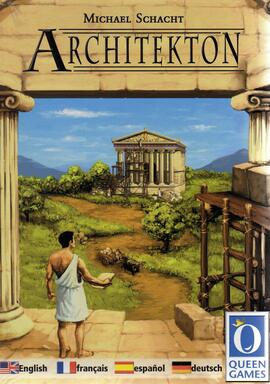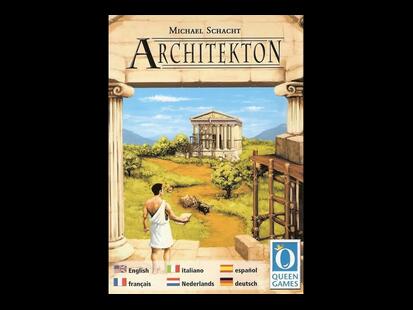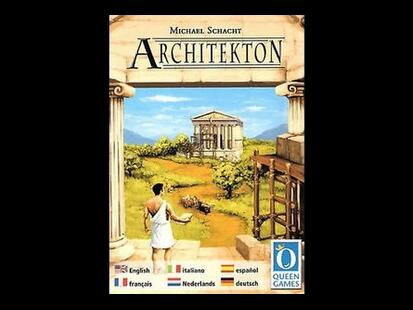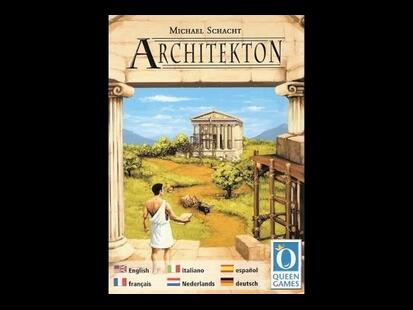Peaceful competitors, the players build a city in ancient Greece. But the case is a problem for both architects. Indeed, each building must be surrounded by the appropriate landscape, otherwise points are removed. Both players receive a point at the beginning of the game. They take houses of their own color. Two landscape tiles are placed in the middle of the playing surface touching each other from the corners. Three building and landscape tiles are turned face up. Four tiles are removed from each of the landscape and building piles. They will form the reserve that will be used at the end of the game.
In turn, a player places two tiles on the game, either two landscapes, two buildings or one of each. Every time he places a building tile, he places one of their houses on it. The tiles placed on the game must be in contact with each other from at least one side. The landscape tiles are only placed next to the buildings and vice versa so that the landscape and building tiles form a checkerboard. The building tiles are surrounded by four types of land (one per side): water, land, plain, forest. To place a building tile, the types of land must correspond to the surrounding landscape. Landscape tiles have only one type of ground, to place them, they must have at least one side that corresponds to a surrounding building tile, but it is not necessary that all sides correspond. It is therefore possible that a building tile is not surrounded by the four types of landscape that form it. After playing both tiles, the player picks two tiles to replace the used tiles so that there are three building tiles and three landscape tiles face up available to the other player.
When a house is surrounded by four landscape tiles, the player who owns the house is awarded one point on the condition that the four landscapes surrounding it correspond to the four types of terrain that are on the building tile. If one of the landscapes does not correspond to the type of land surrounding its building, it loses one point, if two of the landscapes do not correspond, it loses two points, etc. If a player does not have enough points to pay for his loss, he loses the game early. A player may remove a house from play to reduce his losses by one point.
Unless the game has ended early, one or both batteries will be depleted. The players then end their turn using the reserve so that everyone plays the same number of turns. Houses that are surrounded by only one or two landscapes are removed from the game. Then we add one point per house which is touched diagonally, keeping only the largest group of houses per player.
Rule, Educational Sheet ... 2 Files Available2 Files Available
Download the rule for Architekton or any other documents (scenarios, goodies, pedagogical sheet, erratum, ...). 2 PDF files are available. See all available files
Contents of the box : 22 Building tiles, 24 Field tiles, 24 houses (2 colors), The rule of the game.










